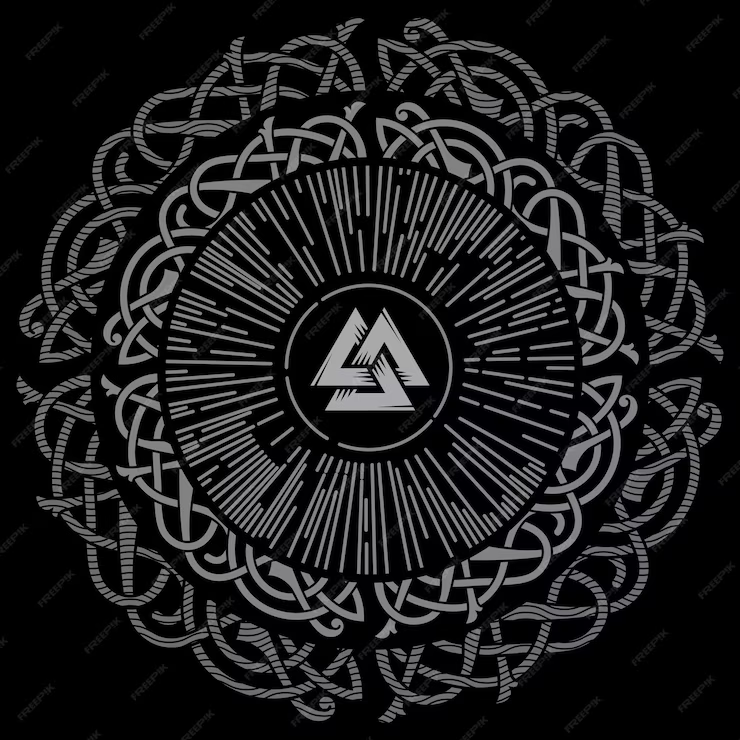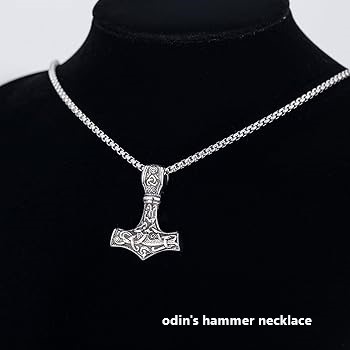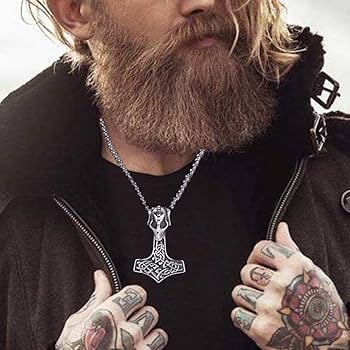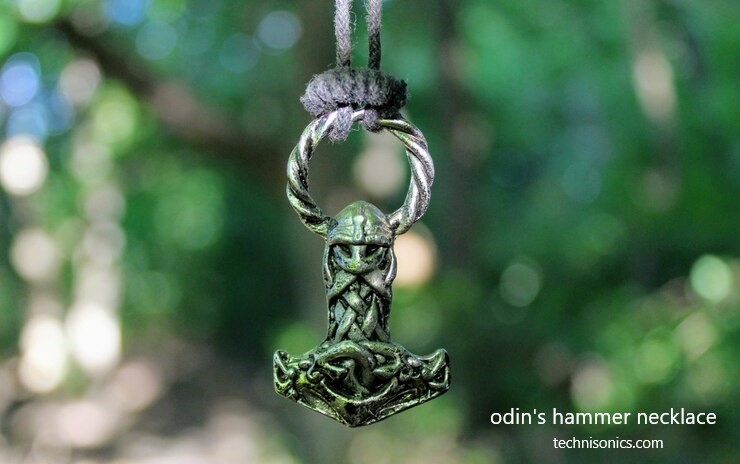Introduction
Odin’s Hammer Necklace is more than just an accessory; it is a striking emblem of Norse mythology and culture. Inspired by the ancient tales of Odin, the Allfather of Norse gods, this necklace symbolizes strength, wisdom, and a deep connection to Viking heritage. Owned and cherished by history enthusiasts, mythology lovers, and style aficionados, Odin’s Hammer Necklace bridges the gap between timeless tradition and modern fashion.
Wearing this piece is a powerful way to honor the legacy of Norse culture while making a bold statement about individuality and inner strength.
Odin’s Hammer Necklace A Timeless Symbol of Strength
The Odin’s Hammer Necklace is a powerful symbol of Norse heritage and mythology, embodying strength, protection, and connection to Viking culture. Inspired by Mjölnir, Thor’s legendary hammer, it also pays tribute to Odin, the All-Father, representing wisdom and leadership. Historically worn by Vikings as a talisman during battles and voyages, it was a sign of loyalty to the Norse gods, particularly during the Christianization of Scandinavia. Today, the necklace is embraced as a timeless emblem of Norse identity, blending ancient traditions with modern expressions of cultural pride and spirituality.
Who Is Odin and What Does the Odin Necklace Mean?
Odin, the chief god in Norse mythology, is a complex figure associated with wisdom, war, poetry, and magic. As a leader of the Aesir gods, Odin’s role in the cosmos is one of power and sacrifice. He is often depicted with his two ravens, Huginn and Muninn, who symbolize thought and memory.
An Odin’s Hammer Necklace signifies the wearer’s reverence for Norse mythology and Odin’s qualities of intelligence and bravery. It often incorporates symbols like Mjölnir (Thor’s Hammer) to represent protection and the unbreakable bond between the gods and humanity.
Odin’s Hammer Necklace A Symbol of Norse Heritage
The Odin’s Hammer Necklace is steeped in Viking tradition. Its roots trace back to the Viking Age (793–1066 AD), when Norse warriors and seafarers wore amulets for protection and strength. These necklaces served not only as spiritual symbols but also as markers of identity, connecting individuals to their gods and ancestors.
In modern times, the Odin’s Hammer Necklace remains a cherished emblem for those drawn to Viking history, paganism, or Nordic culture. It blends mythology with a contemporary aesthetic, making it a popular choice for history enthusiasts and fashion-forward individuals alike.
What Is Odin’s Symbol Called?
Odin’s symbols, like the Valknut (death and afterlife) and his ravens Huginn and Muninn (thought and memory), often appear in the Odin’s Hammer Necklace, linking it to Norse mythology.

Valknut
The Valknut, also known as the “knot of the slain,” is a triangular symbol made of three interlocked triangles. It is often associated with Odin and represents themes of death, the afterlife, and the eternal cycle of rebirth. This symbol is commonly seen in Viking artifacts and is believed to signify a connection between the mortal and divine realms.
Ravens
Odin’s ravens, Huginn (Thought) and Muninn (Memory), are iconic symbols in Norse mythology. They serve as Odin’s messengers, flying across the world to gather information and wisdom. These ravens embody Odin’s omniscience and deep connection to knowledge and exploration.



